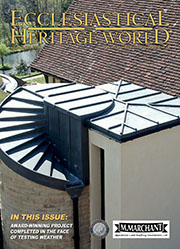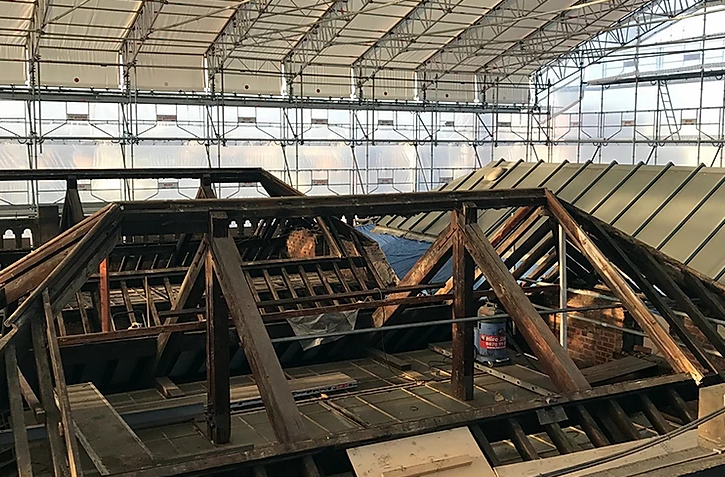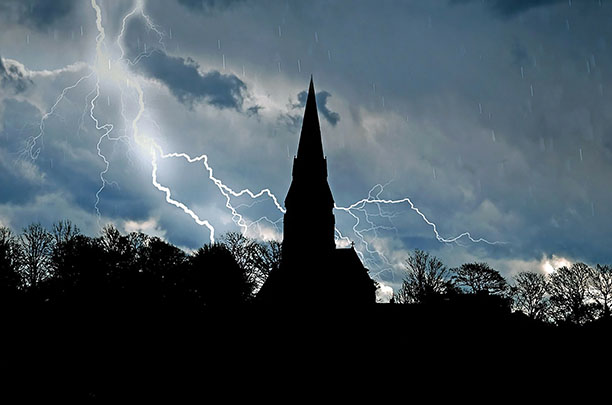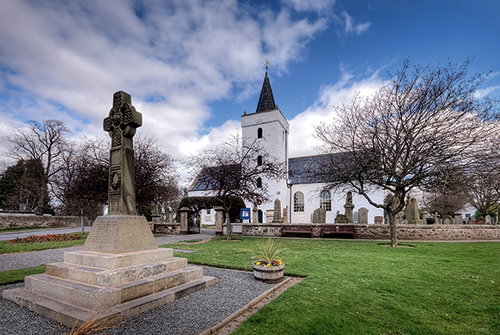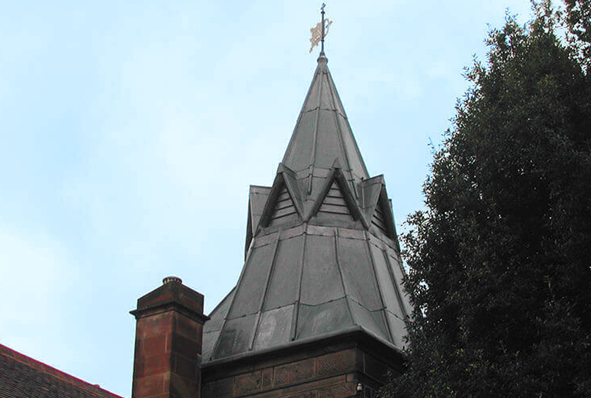Heritage Roofing
Heritage roofing - maintaining our iconic buildings
The UK is home to some of the most iconic buildings in the world, from stunning churches and cathedrals to historic stately homes. Each and every one of these remarkable feats of architecture requires regular maintenance to ensure they remain in the very best condition, allowing them to be enjoyed for generations.
Lightning Protection
When lightning strikes are you protected against this act of God?
The issue of lightning protection in churches is one that has exercised this publication for many years. In this four-part series of spotlights on the issue we will be revisiting various aspects of the subject, beginning with an overview of current thinking.
Traditional Lime
Lime: it’s better for buildings – and for the environment
It is now fairly well known that cement is not good for old buildings and that lime mortar should be used. But why? What are the advantages and what are the disadvantages? In order to begin to answer those questions it is necessary to understand the nature of traditional building, the process by which buildings used to be built, and how it differs from modern construction, the process by which we build today.
Audio Visual
Audio visual equipment in church buildings
This guidance is issued by the Church Buildings Council under section 55(1)(d) of the Dioceses, Mission and Pastoral Measure 2007. As it is statutory guidance, it must be considered with great care. The standards of good practice set out in the guidance should not be departed from unless the departure is justified by reasons that are spelled out clearly, logically and convincingly.
Read More...
CRE Events
All change at CRE: the UK’s ‘ideal church show’
The Christian Resources Exhibition (CRE), the UK’s largest church-related show, has changed hands in its 40th year and has been taken over by Quartz Business Media.
Insurance
You need to ensure that reasonable precautions are in place at your church to keep it safe for those who use it. To do this, you need to think about what might cause harm to people.
You will then need to decide if the precautions already in place are adequate. If they are not, you may need to identify further action to prevent any danger. When done formally, this is known as a risk assessment.
LPOW Grants
£23 million government package to support restoration of thousands of listed places of worship
Heritage Minister Sir Chris Bryant has announced that the Listed Places of Worship Grant Scheme will be extended into the next financial year, providing £23 million so that thousands of historical buildings, including churches, synagogues, mosques and temples, can carry out restoration work.
Lead Roofing
Lead is one of the oldest materials in the roofing industry and is still commonly used throughout the world today.
Lead roofing is a traditional roofing method which has been used in the industry for hundreds of years, and is therefore proven to be extremely reliable. Lead roofing, and sand-cast lead, in particular is ideal for old buildings such as churches or historical renovations, whereas milled lead roofing is a mass-produced alternative, used for precision and accuracy in homes and commercial buildings alike.
Home
3,700BC: BRITAIN'S FIRST CONSTRUCTION BOOM
A ground-breaking scientific dating project led by English Heritage and Cardiff University has succeeded in dating prehistoric features down to a margin of decades instead of centuries. By applying this method to a type of early Neolithic earthwork called causewayed enclosures, it has revealed that Britain experienced a frenetic period of monument building in the decades after 3,700BC, with the country's first big monuments being erected some 1,000 years before Stonehenge was created.
Causewayed enclosures are known prehistoric features, but up to now it has been thought that they spread slowly across Britain over five centuries. But this research reveals that this new class of huge monuments spread rapidly all over southern Britain in a short span of 75 years, starting from the Thames Estuary through Kent and Sussex, and then west, on an intense scale that was not apparent before.
Revolutionising the perception of prehistory
The new knowledge that this happened in a flurry within two to three generations will revolutionise the way prehistory is understood and studied not only in Britain but around the world
.
Dr Alex Bayliss, scientific dating expert at English Heritage, said: "Until now, because of imprecise dates and long time-scales, prehistory has been dominated by processes rather than events. By dating these enclosures more accurately, we now know that something happened quite specifically some 5,700 years ago; the speed with which it took place has completely overturned our perception of prehistory.
"What is more interesting is that we found that some enclosures, such as Maiden Castle in Dorset were used only for a few decades, while others such as Hembury in Devon and Windmill Hill near Avebury in Wiltshire were used repeatedly over several centuries. For the first time, this allows important questions about choice and behaviour to be asked. By giving early human societies this level of detail and generational perspective, we are beginning to get a sense of prehistory in terms of who did what when."
Pushing the boundaries of radiocarbon dating
This is the remarkable result of a dating technique that analyses each radiocarbon date of organic materials collected at a particular site within a complex and exacting statistical model that takes into account the sequence of archaeological deposits obtained from the site.
This has yielded much more precise construction dates of around 40 enclosures, some even narrowed down to decades. Windmill Hill near Avebury in Wiltshire, for example, was previously thought to be built circa 3700 - 3100 BC, but this new technique reveals that it was constructed in 3700 - 3640 BC - narrowing the span from six centuries down to six decades.
What are causewayed enclosures?
Causewayed enclosures, made up of concentric rings of ditches and banks, the largest of which can span 300 metres in diameter, are most common in southern Britain but they are also found in Ireland and in Europe. They are best described as special arenas where large communities gathered and feasted from time to time.
Some 90 causewayed enclosures are known to exist in Britain but traces of them are now hard to detect; among the more visible ones are at Windmill Hill and Knap Hill near Avebury and Whitesheet Hill near Salisbury.
The research also shows that causewayed enclosures were created when Neolithic society had advanced beyond the pioneering phase.
The vast amount of labour and resources involved in their construction could indicate that they were social symbols of an increasingly connected but also competitive society that emerged around 3,700BC along with more intensive exchange networks, perhaps larger cattle herds and social hierarchy.
Evidence for violence like burnt ramparts and people killed by arrowheads typical of the time has also been uncovered by the research in some enclosures, such as Crickley Hill in Gloucestershire and Maiden Castle and Hambledon Hill in Dorset.
Prehistory "no longer the sleepy, hazy swathe of time"Professor Alasdair Whittle of Cardiff University said: "With more accurate dating, the Neolithic period is no longer the sleepy, hazy swathe of time where it is the default position to lump everything together. This research fundamentally challenges the notion that little happened among our Stone Age farmers.
"We can now think about the Neolithic period in terms of more rapid changes, constant movement of people and fast diffusion of ideas. We can also populate our imagination with generations and communities of people making different choices. "
'Gathering Time: dating the early Neolithic enclosures of southern Britain and Ireland' is a research project funded by English Heritage and the Arts and Humanities Research Council. A monograph by Alasdair Whittle, Alex Bayliss and Frances Healy that marks the completion of this eight-year project is published by Oxbow Books.







